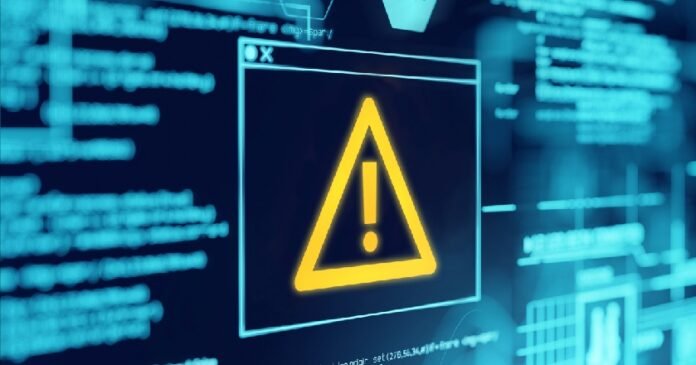From firewalls and endpoint security to detection and response models, modern organizations spend considerable funds – not to mention the reputational damage – in protecting their systems against cyberattacks. However, no matter how sophisticated an organization’s defenses may be, one simple human mistake is all it takes for the door to be flung open to cyber criminals.
Lack of Knowledge
During the first stage, ransomware attacks exploit human, system, and network vulnerabilities to access systems or networks and infect devices (computers, printers, point-of-sale terminals, smartphones, tablets). There are thousands of strains of ransomware virus. Most arrive via phishing emails, malicious websites, malvertisements, or other malware that drops and installs ransomware on systems. Once attackers gain access, they can move laterally across the network. This is a critical step in the attack lifecycle and can be done by compromising credentials or other methods, such as a brute force login on an exposed web server. The last part of the attack cycle is when attackers encrypt data and generate a ransom note to demand money from victims to decrypt their data. This is a lucrative method of attack because criminals know that most organizations will give in to these demands and don’t take the time or effort to test if they have backups before paying. This is why targeted, well-reinforced cybersecurity training complemented by regular testing of security plans and systems is critical. This will help to round out an organization’s attack surface risk management capabilities and provide additional defensive layers against ransomware and other attacks.
Unhygienic Practices
Cybercriminals are constantly creating new ransomware codes to maximize network destruction and target specific industries that will quickly pay a ransom to regain access to data. These criminals often use a combination of social engineering techniques such as spear phishing, malware distribution, or even stealing credentials to get access to critical systems or assets. They may also rely on organized crime to deploy ransomware in exchange for a cut of the illicit profits. The best way to avoid being a victim of ransomware is to practice basic cyber hygiene. This includes updating anti-virus and anti-malware software, limiting privileged accounts, implementing application whitelisting, deploying multifactor authentication, and other cybersecurity best practices. Another simple but essential measure is disconnecting infected devices from the internet and the company network as soon as possible. This helps prevent ransomware from communicating with the attacker or spreading to other computers. Once an infection is identified, it’s essential to use granular reporting and analysis to understand how the attack happened and to help support incident response activities. This can include identifying the infection, determining how it got in, identifying whether decryptor tools are available, and deciding on the appropriate course of action. This sometimes means wiping and restoring affected systems from backup. In other cases, it might be necessary to notify law enforcement and follow data regulation protocols.
Inadequate Attention
Ransomware is malware that prevents users from accessing their computers (or the data hosted on them). After the ransomware is deployed, victims are typically locked out of their desktops and presented with a screen informing them that all files have been encrypted. Cybercriminals then demand a ransom for the victim to regain access to their systems. In addition to halting productivity, these attacks can negatively impact businesses, including loss of revenue and damaged reputations. The good news is that ransomware attacks can be mitigated through proper cybersecurity measures, regular updates, and training.
The threat landscape is constantly evolving, and ransomware is no exception. Ransomware attacks have become increasingly sophisticated over the past year. Many of these new threats are driven by ransomware-as-a-service, which allows cybercriminals to launch attacks without needing cybersecurity knowledge or expertise.
Additionally, attackers exploit remote work’s growth to infect business networks with ransomware. This is mainly because remote employees tend to connect personal devices to their work computers, making it easier for ransomware to spread across systems. To help mitigate these attacks, businesses should educate their staff on identifying suspicious emails and implement policies encouraging them to report potentially malicious messages to the IT team. Additionally, they should implement a robust incident response plan to prepare for the inevitable ransomware attack.
Poor Communication
The human factor can play a role even in large organizations. For example, the WannaCry ransomware attack that hit businesses worldwide was due to personnel taking cybersecurity requirements lightly. In a few cases, non-IT personnel with local administrator rights disabled security solutions and allowed the ransomware infection to spread across their computers and the corporate network. Ransomware infections are relatively easy for attackers, and the payouts can be significant. This makes it attractive for criminals to target various industries and organizations. Infections can be facilitated by credential theft or malware developed for other attacks to gain access to a system. Cybercriminals also use remote desktop protocol (RDP) to log into a device remotely and deploy ransomware. When a device is infected with ransomware, it’s essential to disconnect it from the internet and other devices as quickly as possible. This reduces the likelihood that other devices will be infected and enables a company to limit costs by avoiding paying the ransom demand. It’s also essential to keep up-to-date on the latest ransomware threats and understand how they work. This will enable you to protect your organization’s data better and decide whether to pay a ransom demand in the event of an infection.
